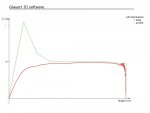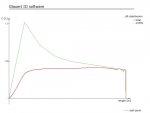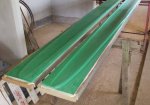Hello dear friends,
my main job is work on LSA-Glider Phoenix
Didier Givois.mp4 - YouTube
and electric version of PhoEnix
Elektra ultralight Phoenix Air - YouTube
but I really like gyroplanes.
Some time ago we had a long discussion with my friend and we decided to try to use our knowleadge from glider world to mae some development on gyroplane blades.
Goal is to decrease induced drag of blade = increasing L/D.
Of course we don´t expect to approach to normal airplanes.
But from our calculation seems that it is possible to improve blade characteristics using different depth of profile along radius.
Seems also that twisting of blade make a difference.
Can you please check the attached pictures to make a comment?
Maybe we are wrong in our expectations how is the lift discributed.
Threfore we are open to discuss the idea how to improve gyroplanes
Martin
my main job is work on LSA-Glider Phoenix
Didier Givois.mp4 - YouTube
and electric version of PhoEnix
Elektra ultralight Phoenix Air - YouTube
but I really like gyroplanes.
Some time ago we had a long discussion with my friend and we decided to try to use our knowleadge from glider world to mae some development on gyroplane blades.
Goal is to decrease induced drag of blade = increasing L/D.
Of course we don´t expect to approach to normal airplanes.
But from our calculation seems that it is possible to improve blade characteristics using different depth of profile along radius.
Seems also that twisting of blade make a difference.
Can you please check the attached pictures to make a comment?
Maybe we are wrong in our expectations how is the lift discributed.
Threfore we are open to discuss the idea how to improve gyroplanes
Martin
Attachments
Last edited:






